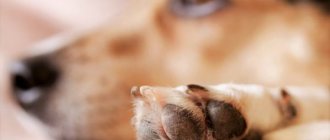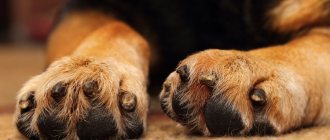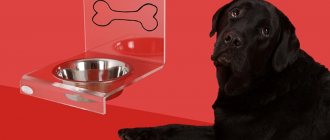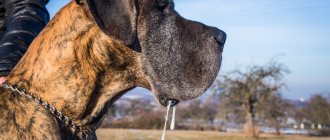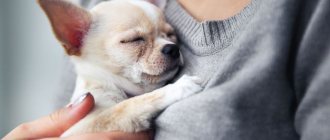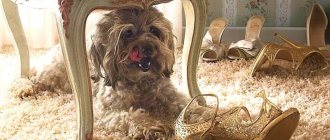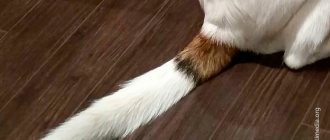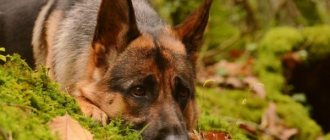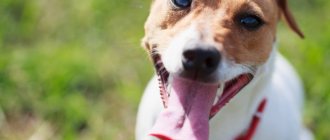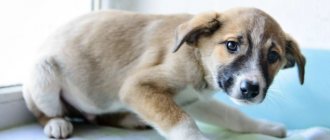Contrary to popular belief, the taste preferences of four-legged animals are much wider than they seem. Pets eat grass, dig up worms, love fruits, sometimes even eat pebbles, and to some extent all this is normal. When a dog chews a tree, does it enthusiastically and persistently, the owner begins to worry... and for good reason.
Let us immediately note that it is simply impossible to stop the desire of dogs to chew anything. In puppyhood, these tendencies are much more pronounced, but they do not disappear when the four-legged animal grows up. It is the owner's responsibility to ensure the comfort of the ward, in this case - with toys that can be chewed.
Remember! If a dog chews on a tree, especially the bark, seemingly innocent fun can end tragically. At best, the pet injures its gums with splinters. In the worst case, after swallowing a large piece of bark, the dog will suffer from perforation of the stomach or intestines.
Motivation
Every action, even illogical and strange, has reasons... if we are talking about an average, mentally healthy dog. Even if we are talking about a mental disorder, there are also reasons, but everything is more complicated here; below we will look at such situations in a little more detail.
In a global sense, the reasons can be divided by origin:
- Behavioral or pathological.
- Mental – that is, behavior depends on obsessive phobias or inconvenience caused by something.
Note! It is normal for dogs to chew and chew on wooden sticks, but they should not swallow wood fragments.
Domestic and wild animals
The animal's needs are divided into 3 groups: physiological, social and developmental needs. In the wild, satisfying these needs is necessary to preserve life and procreate.
Domestic animals are already in different conditions, where there is no struggle for existence, and selection is largely influenced by the quality of the genetic material obtained during breeding, the level of veterinary care, diet and features of keeping the dog. But instincts and evolutionary needs still determine the behavior of pets, so the satisfaction of these needs depends entirely on the owner and the degree of his responsibility.
Physiological reasons
The first behavioral reason is exploring the world . It is normal for a baby of any species to smell and taste unfamiliar objects. Given the curiosity of puppies, anything can get into their teeth, including wood. It is worth noting that wood has a smell and taste, which only encourages an inexperienced pet. For example, a tree of fruit varieties has a sweetish taste and a pleasant smell. The oak is a little tart and smells slightly bitter, which is not so bad in the eyes of dogs.
Why does the dog chew the doghouse?
Many dog owners, whether puppies or adult pets, often encounter a problem when the dog begins to chew shoes, furniture, books, household utensils or its kennel. Often the measures taken to prevent property damage turn out to be ineffective.
Attempts to somehow correct the situation by punishing the four-legged pest lead nowhere and the situation begins to get out of control. This article is specifically intended to help you find a way out and a solution to this complex problem.
Psychological reasons
The desire to eat inedible things is a mental disorder commonly called pica . This is a serious and very deep problem. As practice shows, it is very rarely possible to discover the cause and correct the pet’s behavior.
Pica is a disorder of the feeding mechanism , like anorexia in people; in other words, when a dog eats something inedible, its unconditional instinct has broken down. The reasons why such violations can occur are:
- Experienced hunger - usually dogs not only eat everything, but also hide supplies.
- Life in a shelter or quarantine site in conditions of high competition for food is enough even for a short period of time.
- Violence as a puppy or young adult.
- Severe stress , for example, transfer into the wrong hands or death of the owner.
- Traumatic brain injury, neoplasms or other brain pathologies.
Note! We can talk about mental disorders only when all physiological problems are excluded.
My dog picks up and chews sticks: what should I do about it?
Contents hide
We have no doubt that many readers, after reading the title, will only shrug their shoulders in bewilderment. It seems that this is the natural behavior pattern of our pets: to find, pick up, grab with your teeth, and finally, chew. This is where the main catch lies: not all sticks are perfectly smooth. Now let’s imagine that a dog can chew through even a “smooth” stick, without knots or jagged edges. Whatever one may say, two sticks are formed, with very sharp edges. We hope the logic is clear: one or two awkward movements, and the animal gets seriously injured. There is no need to say what will happen if some sharp twig is accidentally swallowed.
We foresee objections: for centuries dogs have played and amused themselves with sticks, and no one has caused a tragedy. However, this does not reduce the number of injuries. The owners rely on the famous “maybe” - well, stick and stick, the dog will play and quit. Our British colleagues, for example, turned to veterinary clinics for clarification and received a not very encouraging answer: injuries caused to pets by selected sticks can be very, very serious, and the number of requests from owners, especially during the season, is off the charts. Therefore, there is only one verdict: as soon as possible, it is better to discourage your pet from picking up sticks. The earlier the better.
What makes dogs pick up sticks? Experts believe that pets observe this behavior pattern in people, as well as other dogs. Pick it up, play it, bring it to the owner - it’s simple and natural. Don't feed some pets bread - they are ready to carry a stick in their teeth for days on end. The behavior usually appears from puppyhood, and most often this happens with the owner's blessing. “Play with a stick, my friend!”
Also note that dogs are social creatures. Often a stick becomes a common toy. They “fight” for it, growl at each other, grab at different ends, snatch it away. Further more. A found stick turns into an item of property, and the pet is ready to defend it by any means and means. Security and protective instincts are activated.
There are often times when pets act out of pure curiosity. The smell seemed pleasant, the shape of the stick attracted me, I liked the feeling caused by the stick in my mouth - and the job was done. We would like to mention puppies in a separate line, especially during the period when they are teething. Everything is clear here: the stick completely replaces the chewing toy, the baby chews and chews on the stick with gusto and skill. It is easy to foresee that the behavior model successfully migrates into adulthood.
What to do, what to do? Despite the apparent “naturalness” of the behavior, we would advise against using randomly selected sticks as toys. We have already talked about the reasons above. It's not easy to do, but it's worth a try. And first, we recommend that you take a closer look and determine in what capacity your dog uses his stick.
Find an alternative. The dog wants to occupy its mouth with something - take a suitable “chew” toy for a walk. They are available in an assortment in pet stores. Take a closer look at those sold in the department for hunting dogs (training and training). Your dog craves active games - try replacing the stick with a regular ball. The most effective and at the same time safe alternative.
Do not use stick-shaped toys. It is difficult for a pet to figure out and determine where the “genuine” stick is and where the substitute toy is. The form is the same, which means there is no difference. If you give up sticks, then immediately and for good.
Repeat the knowledge and give the command “fu”. Without any reservations, give the command as soon as you notice the dog's interest in the stick. The command will temporarily suppress the pet’s activity, and then don’t get lost - offer him some interesting activity.
Do not encourage or develop the game. That is, do not pull the stick out of your mouth and grab the opposite end. The dog will simply think that the owner has decided to join the game, and his own actions are thus encouraged.
Make sure your puppy has chew toys. During the teething period, puppies are ready to desperately gnaw on everything they come across. Buy them special rodents of various types and types - they are sure to like something.
Use a muzzle. This is the most extreme measure. Use it when all other methods fail. We emphasize: the measure is both extreme and temporary. The owner in any situation must maintain control over the pet. Actively practice knowing and executing the “fu” command. And don’t forget to choose alternative and safe toys that will be more attractive than unsightly knotty sticks.
Based on: How Can I Discourage My Dog From Picking Up Sticks? Source: pets4homes.co.uk Photo: pixabay.com
How to stop a dog from chewing the kennel
In order to wean a dog from chewing a kennel or personal belongings, you need to pay more attention to it, play with it and periodically update its toys. Sometimes a large beef callus can distract your pet from your things or his kennel for a long time. You can buy her half of the dog toy store, but still the dog will not stop damaging property.
It will be much more effective if you reward her for playing with a new toy with her favorite treat, and then she will forget about damaging the booth or your things. Often, owners of vandal dogs resort to a trick when they put a tasty treat in their pet’s favorite toy, and while playing with it the dog forgets about damaging his doghouse.
How to stop a dog from chewing things
In order to wean a dog from chewing things, you must first establish the reason for its inappropriate behavior. If a pet frolics within a city apartment, then it must be isolated in a separate room, from where it is recommended to remove all things that the dog can choose for its “barbaric” games. Here are a few ways to minimize damage from a vandal dog.
In most cases, the blame for damage to the owner's property falls entirely on the shoulders of dog owners who, before purchasing a puppy, did not bother to learn in more detail all the features of this breed, its habits and habits. Accordingly, if you get a dog that is a companion by nature and leave it alone for a long time, dooming it to loneliness, then get ready for the dog to take out its longing for you on your things, furniture or its kennel, which you so diligently they built it for him.
Other solutions and considerations
Taking your dog to a trainer or veterinarian is the best way to deal with this situation. You only want the best for your best friend, and often they need a trainer or veterinarian. While we know you love your dog and are often accused of pampering him with toys and treats, we know that budgeting for visits to the vet or trainer is difficult and expensive.
If your budget is limited, check out the options mentioned above. You can stay home more often or hire a dog walker to give him someone to interact with during the day. If you have the money to take him to doggy daycare, it will stimulate him and get rid of excess energy.
Buy interactive or durable chew toys for him and place them throughout the house. It may be worth crating your dog, but consider his background first, especially if you are not his first home. This can add more stress than relief and cause more behavior problems. If in doubt, consult your veterinarian.
Animals in the country
Author: Olga · Published 05/31/2019 · Updated 05/31/2019
The long-awaited summer season has arrived, when we strive to spend all our free time at our favorite summer cottage .
The benefits of such a pastime are much more significant than the physical costs that we have to make so that the vegetable beds produce a rich harvest, so that the fruit trees provide a year's supply of vitamins to our children and grandchildren, so that the flower garden pleases the eye and soothes the soul, so that fresh, life-giving air and summer , the gentle sun gave a positive charge to our energy weakened by the gray everyday life of the city.
But besides the children, our other favorites - pets . Is it possible to leave them alone and bored in a stuffy apartment? How not to pamper and deprive “small children” of all the delights of a country holiday? Of course, we take them with us.
That’s when new holes appear in flower beds, broken flower stalks, trampled fresh crops, “marked” trees and shrubs, and additional organic fertilizers added by the pet in the most unexpected places.
We want to tell you in this article how to avoid such annoying misunderstandings at your summer cottage. And we want to start with, perhaps, the most beloved, loyal, but often very indecently behaved dogs.
